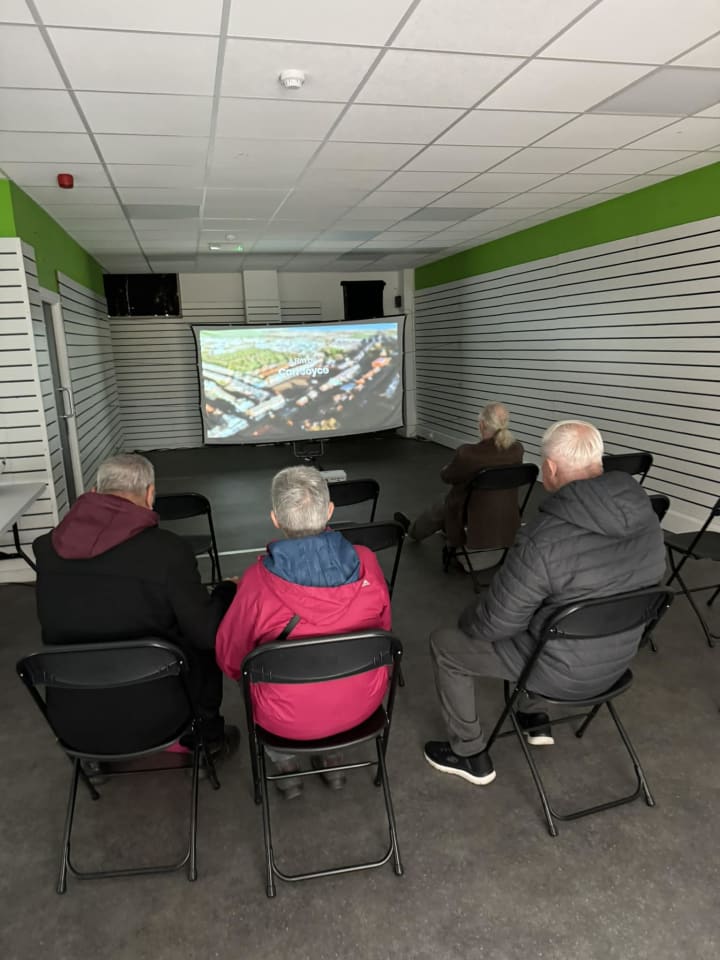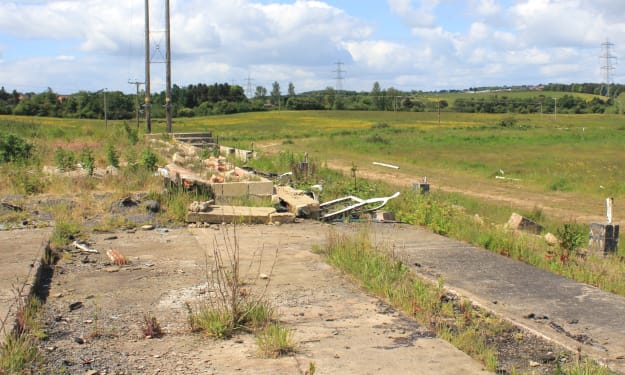The School on Seaside Lane
Learning lessons from Easington Colliery
School. A universal experience, yet somehow unique to each of us. Whether it’s memories of school dinners – multi-coloured custard and bright sprinkles on sponge cake – or a uniform that somehow resembled normal clothes while being unimaginable outside of the classroom, those days stir deep memories for many.
Those memories are often locked up in a building: you can probably remember something of your old school now. The parquet floor? The smell, distinctive yet oddly reassuring? The corner of the yard you convinced yourself was haunted, or the peg and cubbyhole where you stashed your coats and bags? All deeply personal, yet all part of a rich shared experience.
So when a school is closed, when the buildings fall into decay and finally the bulldozers move in, it resonates. The ripples spread through a community. Memories disturbed, emotions stirred. That’s the starting point for “The School on Seaside Lane”, Carl Joyce’s award-winning documentary short about the demolition of the old primary school in Easington Colliery, County Durham. It’s a work that fits snugly alongside the recent Durham Ice Rink exhibition (another project involving Carl) and the Dogpeople podcasts recalling the glory days of greyhound racing in County Durham.
In Carl’s hands, an old primary school becomes a powerful metaphor for the decline of a mining community. Closed in 1997, the school on Seaside Lane was not much lamented when it was finally demolished in 2021. Two decades of neglect left an eyesore at the heart of a once-thriving community and there were few still interested in trying to save the 100-year-old buildings.

Yet Carl’s film captures the underlying sense of loss. For generations, thousands of youngsters went to school here. It was woven into the fabric of the village every bit as tightly as the colliery itself (closed in 1993). The day the pithead buildings were pulled down is one of the more striking memories evoked in the film: the end of an era witnessed through the eyes of a child.
Other voices range from anger to despair, via Billy Elliott and bafflement – “it was good enough for Hollywood” – as they reflect on what Easington Colliery was and what it has since become. Carl gives these voices space to tell their story without intrusive prompts or an agenda from outside. The effect is dignified, moving, an elegy for a community abandoned when the pit closed and never given a chance to recover.

Like all the best filmmaking, Carl’s work inspires further conversation. After scooping the Best Documentary Award at the 2024 Sunderland Shorts Film Festival, a hastily arranged screening in an empty shop in Peterlee’s Castle Dene shopping centre took “The School on Seaside Lane” into the community. Many who dropped in to watch had their own memories of Easington, Horden, Seaham and the other former mining communities on the Durham coast. Some recalled going to the school, others talked of family trips to do the shopping on Seaside Lane when it was a thriving high street. Tales of getting the bus in from neighbouring towns, memories of how a trip to the butchers turned into a day out simply because you knew almost everyone else in the shops and stopped for a chat.
Today, Easington Colliery isn’t like that. The old school site is grassed over, fenced off, uncertainly awaiting its future. Shops are run down, a few businesses clinging on amid their boarded-up neighbours. Cheap housing attracts out-of-town landlords and tenants moved in from all parts as cash-strapped local authorities in more affluent regions struggle to provide social housing. In the Miner’s Welfare Hall, there’s a sense of a community lost. It’s not an ambivalence towards newcomers, more a frustration that so much of the new population is transitory, never staying long enough to play a part in its new home. Westminster is 265 miles away, the old Easington District Council was absorbed into Durham Couty. It’s easy to feel overlooked, that levelling doesn’t reach this far up.
It could be different. Investment, a genuine attempt to replace the jobs stripped away when the colliery closed. But a lack of long-term planning risks becoming a demonstration of how not to lead communities through changing times.
The School on Seaside Lane is no more. But the Colliery’s story still has lessons to teach.
Pop-up screenings of “The School on Seaside Lane” run 10am-3pm at Peterlee’s Castle Dene Shopping Centre. Carl is showing his film in the empty unit next to Specsavers.
About the Creator
Andy Potts
Community focused sports fan from Northeast England. Tends to root for the little guy. Look out for Talking Northeast, my new project coming soon.
Enjoyed the story? Support the Creator.
Subscribe for free to receive all their stories in your feed. You could also pledge your support or give them a one-off tip, letting them know you appreciate their work.






Comments (2)
These buildings that represent community. So weird when they're no longer there. My school is overgrown and looks so little, I can't see it as the same place at all. Insightful as usual.
A sad, but interesting read… thanks Andy👍🏼.